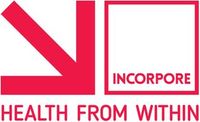The best workouts to help employees relieve stress

As Stress Awareness Week continues, why not highlight some of these exercises to employees to help them ease their stress levels.
Yoga
Yoga focuses on uniting the mind, body and spirit. It creates a meditative environment to improve the overall quality of life. It does this by focusing on stress relief whilst improving the body. Yoga is all about energy: the more freely it flows through the body, the more centred people feel. However, physical tension stops this flow, causing the body to become rigid and tight. This is where yoga comes in, it helps to keep the body supple and strong though controlled stretching and strengthening.
Yoga is considered therapeutic to calm the mind through repetitive movement and will at some point feature meditation. This is why many people practice it in order to relax. It is also a useful tool to increase joint flexibility and build strength.
Dance
Dancing can be an easy way to release stress and frustration, whilst also providing an outlet for self-expression and creativity. It also helps with weight loss, building muscle, flexibility, better balance and bone strength. Be it a Zumba class, salsa dancing, ballroom, ballet or tango, any form of dance can ease stress and lift the spirits.
Pilates
Pilates focuses on gaining flexibility, strength and body awareness without bulking up. It helps to strengthen your stomach, back, arms, inner thighs and glutes, along with improving posture, elongating the spine and developing balance. Pilates concentrates on creating an understanding that the mind and body are connected.
The core principles are concentration, control, centring, flow, breath and precision. When used correctly with the right mindset, you're creating a better you with a leaner and toned body. Not only that but also relieving stress and anxiety symptoms.
Kickboxing
Kickboxing can be a great way to let out stress. It's a blend of martial arts and boxing, which involves controlled punching and precise kicking movements. It's fantastic for working out frustration and can be used as an outlet to release energy and anger. Hitting a punch bag can have a cathartic effect on stress levels. Furthermore, it also improves balance, flexibility, concentration and coordination.
Tai Chi
Tai Chi is a form of exercise originating from China, and is a series of flowing body movements and breathing techniques. It's designed to connect the body and mind for a sense of calm and serenity, making it an excellent choice for stress relief. Tai Chi will engage your entire body with breathing techniques. Along with improving muscular strength, flexibility, immunity and relieving pain. It also builds bone density, lowers blood pressure, boosts the immune system and eases conditions like heart failure, arthritis and fibromyalgia.
Swimming
Swimming can be very relaxing and people who regularly work out benefit from a positive mood boost. Consequently, it creates a huge endorphin rush bringing lots of feel good emotions and gives a better sense of wellbeing. Those who swim experience a relaxation sensation as the body is constantly being stretched and, combined with deep rhythmic breathing, swimmers can feel a calming rush. Swimming can help distract from the outside world thanks to being immersed in the sound of the peaceful water. Therefore, lowering stress levels in the process.
This article is provided by Incorpore.
Supplied by REBA Associate Member, Incorpore
Our range of products all fuel our vision to create a fitter, happier & more productive workforce.







